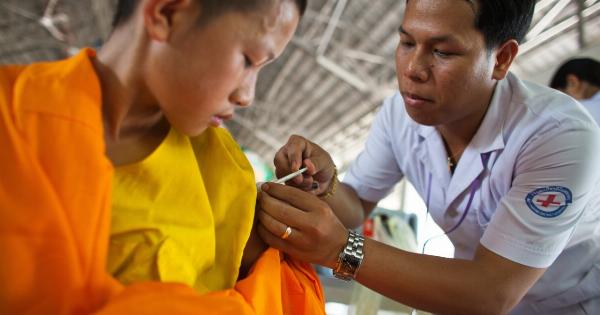As women age, one of the biggest concerns they face is the ticking of their biological clock. The decreasing fertility and the risk of genetic abnormalities in their offspring often leads to anxiety and distress.
However, recent advancements in medical science offer a glimmer of hope with a revolutionary procedure called ovarian rejuvenation. In this article, we will explore the concept of ovarian rejuvenation and how it can potentially change the paradigm for women trying to conceive.
Understanding the Biological Clock
The biological clock is a term used to describe the diminished fertility and reproductive capacity that comes with age, particularly in women.
As women age, the number and quality of their eggs decline significantly, making it more difficult to conceive naturally. Additionally, the risk of miscarriage and genetic abnormalities such as Down syndrome also increases.
This decline in fertility usually starts in the late thirties and accelerates in the early forties, leading many women to feel rushed and pressured to start a family.
What is Ovarian Rejuvenation?
Ovarian rejuvenation is a procedure that aims to restore fertility and improve egg quality in women who are struggling to conceive due to age-related factors.
It involves extracting a small piece of ovarian tissue, which contains the dormant follicles that hold immature eggs, and treating it to activate these follicles. The activated follicles can then potentially develop into mature, healthy eggs, offering renewed hope for women trying to conceive.
The Science Behind Ovarian Rejuvenation
The scientific basis of ovarian rejuvenation lies in the presence of dormant follicles in the ovarian tissue. These follicles contain immature eggs that have the potential to develop into mature eggs.
However, as a woman ages, these follicles become less responsive to the hormonal signals that trigger their growth and maturation.
In ovarian rejuvenation, the extracted ovarian tissue is processed to release growth factors and proteins that help stimulate the dormant follicles.
This activation process can potentially restore the responsiveness of the follicles and promote the growth and maturation of eggs. Once the eggs reach maturity, they can be retrieved and used for in vitro fertilization (IVF) or other assisted reproductive techniques.
The Procedure and Success Rates
Ovarian rejuvenation is typically performed as an outpatient procedure under local anesthesia. A small incision is made in the lower abdomen, and a piece of ovarian tissue is carefully removed.
The tissue is then processed in the laboratory to activate the dormant follicles. After the activation, the mature eggs can be collected using a minimally invasive procedure.
While the idea of ovarian rejuvenation offers hope for women struggling with age-related infertility, it is important to note that the procedure is still considered experimental.
The success rates vary, and more research is needed to fully understand its benefits and limitations. However, preliminary studies have shown promising results, with some women achieving successful pregnancies after ovarian rejuvenation.
Considerations and Potential Risks
Before considering ovarian rejuvenation, it is essential to discuss the procedure thoroughly with a fertility specialist.
While it may seem like a magical solution for age-related infertility, it is important to understand that the science behind it is still evolving.
One potential risk of ovarian rejuvenation is the potential for the activation of abnormal cells within the ovarian tissue.
Since the procedure involves stimulating follicles that have been dormant for a long time, there is a theoretical risk of activating abnormal cells that may lead to the development of ovarian cancer. However, the actual risk is yet to be determined, and ongoing research aims to better understand and mitigate these risks.
Alternative Options for Age-Related Infertility
For women who are concerned about their declining fertility as they age, but are not ready to pursue ovarian rejuvenation, there are alternative options available. These include egg freezing and using donor eggs or embryos.
Egg freezing allows women to preserve their eggs at a younger age, when they are still of good quality, for future use. Using donor eggs or embryos offers the opportunity to conceive with the help of younger, healthier eggs.
The Emotional Journey of Age-Related Infertility
Beyond the biological challenges, age-related infertility takes a toll on a woman emotionally. The pressure to conceive before the biological clock runs out can lead to anxiety, depression, and feelings of inadequacy.
It is crucial for women going through this journey to seek emotional support and counseling to help navigate the emotional ups and downs.
The Future of Ovarian Rejuvenation
While ovarian rejuvenation is still considered an experimental procedure, it holds promise for women struggling with age-related infertility. Ongoing research aims to improve success rates and minimize potential risks.
With further advancements, ovarian rejuvenation may become a mainstream option for women looking to extend their fertility and have a child later in life.






























